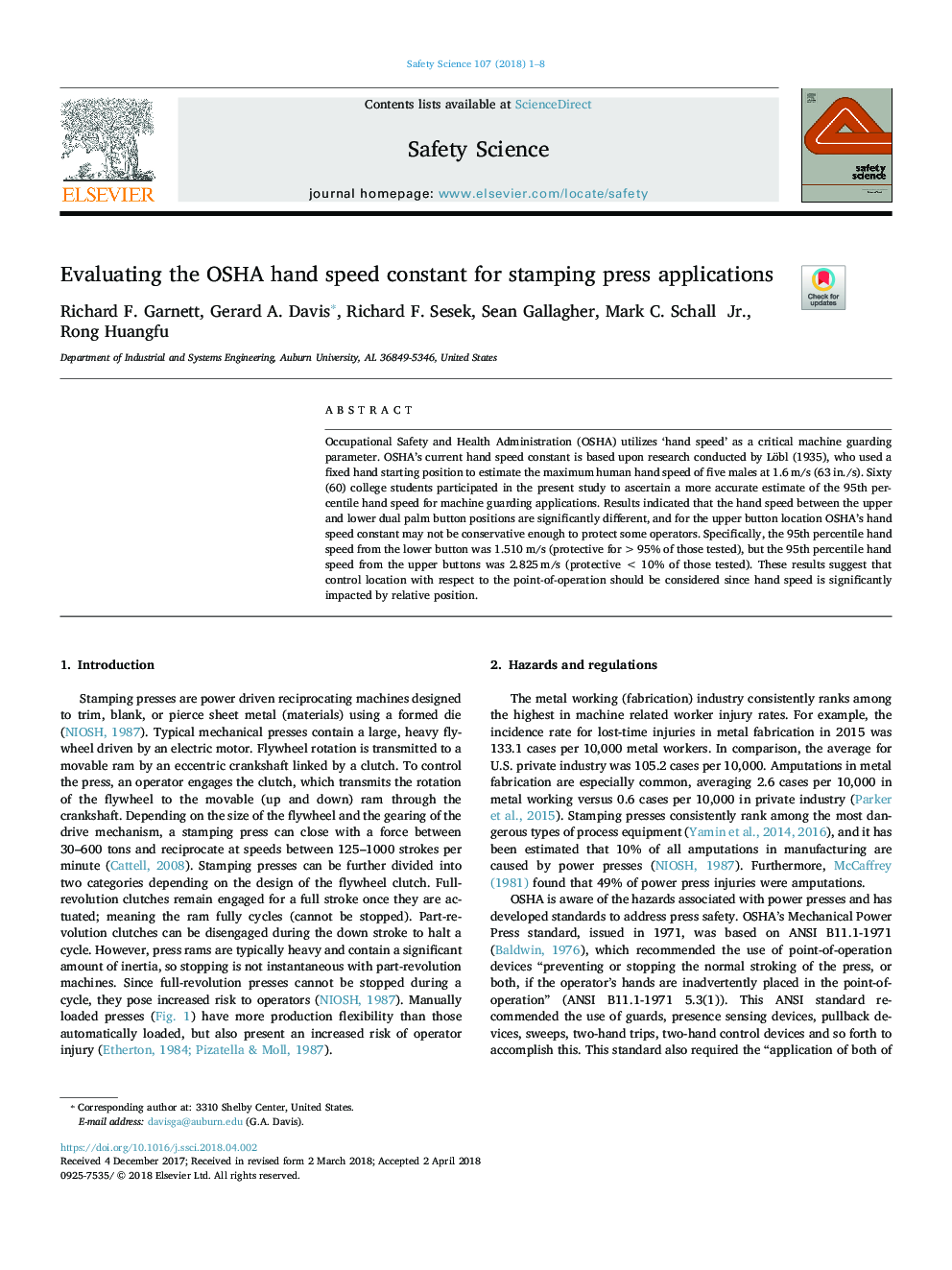| Article ID | Journal | Published Year | Pages | File Type |
|---|---|---|---|---|
| 6974821 | Safety Science | 2018 | 8 Pages |
Abstract
Occupational Safety and Health Administration (OSHA) utilizes 'hand speed' as a critical machine guarding parameter. OSHA's current hand speed constant is based upon research conducted by Löbl (1935), who used a fixed hand starting position to estimate the maximum human hand speed of five males at 1.6â¯m/s (63â¯in./s). Sixty (60) college students participated in the present study to ascertain a more accurate estimate of the 95th percentile hand speed for machine guarding applications. Results indicated that the hand speed between the upper and lower dual palm button positions are significantly different, and for the upper button location OSHA's hand speed constant may not be conservative enough to protect some operators. Specifically, the 95th percentile hand speed from the lower button was 1.510â¯m/s (protective for >95% of those tested), but the 95th percentile hand speed from the upper buttons was 2.825â¯m/s (protectiveâ¯<â¯10% of those tested). These results suggest that control location with respect to the point-of-operation should be considered since hand speed is significantly impacted by relative position.
Related Topics
Physical Sciences and Engineering
Chemical Engineering
Chemical Health and Safety
Authors
Richard F. Garnett, Gerard A. Davis, Richard F. Sesek, Sean Gallagher, Mark C. Jr., Rong Huangfu,
